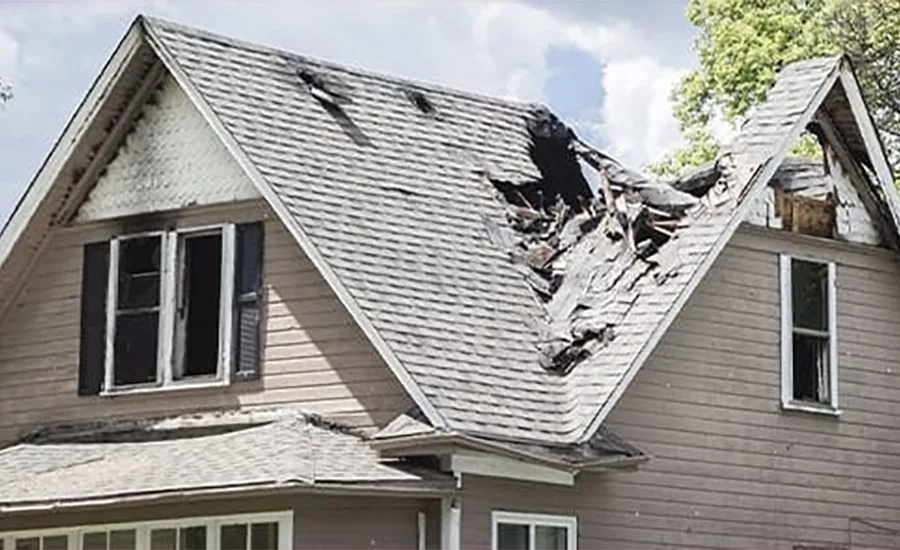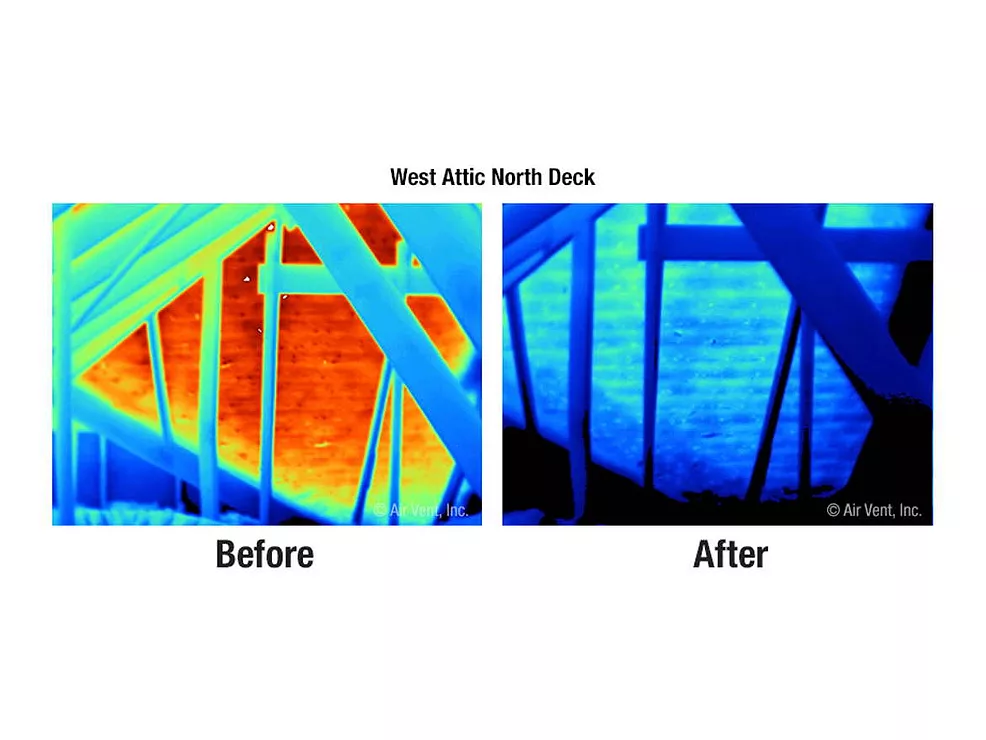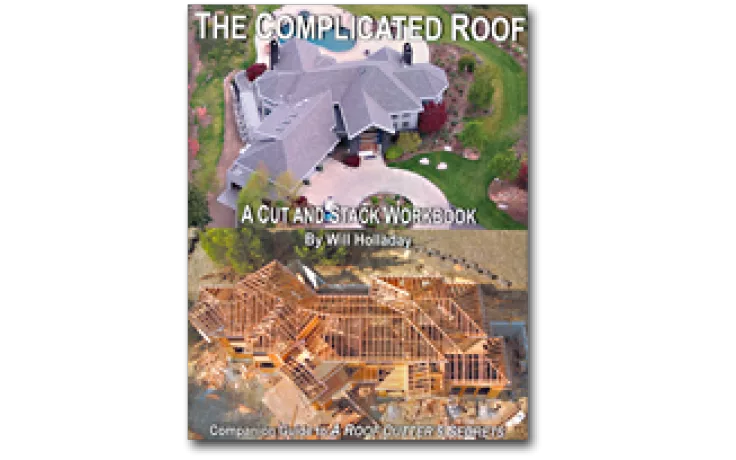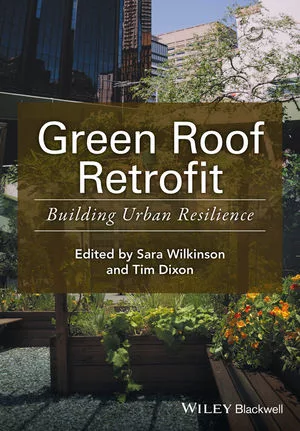Extreme Weather Special Section
Insurers Further Tighten Grip Amid Surging Roof Losses
Claims hit $31 billion as weather, materials and labor squeeze contractors

Roofing contractors across the country are experiencing increasing pressures due to severe weather, escalating material costs, and tighter insurance requirements, which are causing claim costs to reach record levels.
— Image courtesy of Service Legends
Roofing contractors nationwide are confronting an unprecedented spike in claim costs that threatens profit margins, bonding capacity and insurer relationships.
In 2024, total U.S. roof repair and replacement costs soared to nearly $ 31 billion — an almost 30 percent jump since 2022 — according to a report published last month by Verisk, a data analytics and risk assessment firm.
Titled “U.S. Roofing Realities,” the report’s findings mean roof line items now account for over a quarter of all residential claim value, with non‑catastrophic wind and hail losses climbing from 17% to 25% of residential claims since 2022.
Meteorologists and insurers point to a barrage of severe‑weather events as the trigger. The National Oceanic and Atmospheric Administration recorded 5,373 hail events in 2024 — only slightly below the record 6,962 of 2023 — and identified Texas, Kansas and Missouri as hail hot spots, according to the Insurance Information Institute and analysis by State Farm.
Meanwhile, billion‑dollar wind‑and‑hail disasters numbered 17 last year, part of a broader trend of more frequent convective storms that cost insurers $29 billion in 2022, the trade publication Claims Journal reported.
“The storms just keep coming, and they’re getting nastier,” said Jonathan Porter, chief meteorologist at AccuWeather, referring to the destruction left by Hurricane Helene and other 2024 events.
In recent years, significant hail activity, inflation, exposure growth through new construction, and human migratory patterns have all contributed to the increase in total roof losses and claim amounts, explained Ryan D’Amario, vice president of property product management at Verisk.
He described the data as a validation of firsthand feedback Verisk receives from insurers.
“It might not be financially feasible to proactively replace a roof in every situation, but the age of the roof is highly correlated with loss,” D’Amario said. “Especially when you look at asphalt shingle materials
Supply Chains, Labor Shortages and Tariffs Exacerbate the Problem
Asphalt shingles, which cover 80 percent of U.S. roofs, jumped in price by roughly 20 percent over two years — four times the normal pace — due to factory bottlenecks, higher oil inputs and new tariffs on steel and aluminum, according to analysis by L&S Insurance.
“In many situations, we find areas of the country–states like Missouri [and] Kansas–where roofs don’t last eight years,” D’Amario said. “Be it through continued wear and tear or exposure to significant weather activity.”
Material cost increases have only compounded the pain. Industry analysts predict that tariffs threaten to add 25 percent to the cost of metal roofing, flashings and gutters.
Thomas Hasler, CEO of Sika, said optimism among contractors “changed following tariff announcements,” with some projects deferred amid material‑price uncertainty.
At the same time, a chronic shortage of skilled roofers has driven labor costs to record highs. An Associated General Contractors of America survey last year among its members determined that 77% of respondents said they had difficulty filling salaried or hourly craftworker positions.
Yet, according to reporting by Construction Dive, nearly the same figure, 69%, said they still planned to increase staffing to meet demand despite the challenges faced in finding warm bodies to handle the workload.
Twenty percent of respondents said hiring will become even more challenging in 2025 as the Trump administration squeezes the immigrant labor pool. Reinforcing the challenge, a National Roofing Contractors Association survey last year noted that over three-quarters of its members struggled to fill craftworker positions.
Despite such headwinds dampening hiring, the Bureau of Labor Statistics projects roofing employment will grow 6 percent from 2023 to 2033. While faster than average, that above-average rate will only yield about 13,600 hires annually, many of whom will replace retirees rather than expand capacity.
“The winds in the labor market are shifting,” said Bernard Baumohl, chief global economist at the Economic Outlook Group, noting continued upward pressure on wages and tight crews.
* * *
Insurers Take Evasive Maneuvers
Diane Delaney of the Private Risk Management Association says carriers are tightening documentation requirements, imposing higher deductibles and demanding code‑compliant scopes of work before paying roof claims.
Fraud also looms large: the FBI estimates false or inflated roof‑claim schemes cost insurers more than $1 billion annually.
As previously reported, lawmakers in states like Texas and Florida have enacted rules to curb “storm‑chaser” contractors, banning contingency‑fee contracts and mandating more apparent separation between adjusters and contractors; most recently in pending legislation under consideration by the Louisiana State House.
Florida also recently expanded homeowners’ rights to cancel roofing and adjuster agreements without penalty to curb abuses.
Age and condition also add to risk. Verisk found that in hail‑prone states, roofs last on average 15 years versus 22 years in milder western states.
Additionally, 29 percent of homes with asphalt shingles have fewer than four years of useful roof life, which Florida’s Insurance Commissioner brought to light in comments made earlier this year, causing widespread consternation among roofing pros.
Independent Agent Magazine cited statistics claiming roofs in moderate to poor condition incur 60 percent higher loss costs than those in good or excellent shape, and 38 percent of U.S. homes fall into that moderate‑to‑poor category.

What’s a Roofer to Do?
The stakes are high for roofing contractors. Increased claim delays and supplements can strain cash flow, and disputes over scope may lead to litigation. Adding insult to injury, the insurance chattering class is discussing how carriers may tighten bonding requirements or jack up premiums for firms deemed risky.
In a recent Roofing Contractor news analysis, Karla Ferguson, principal of J&K Roofing in Golden, Colo., complained that insurers “prolong the approval process by disputing basic state and city codes,” another tactic she asserted drives up material and labor expenses on every job.
However, it is not all doom and gloom: some strategies can help contractors stay afloat.
Investing in higher‑performance products like impact‑resistant shingles, hip‑style roof designs and metal systems can reduce future loss frequency and earn policy credits through programs such as Florida’s Safe Home wind‑mitigation grants.
Using drone‑captured imagery and Verisk’s Roof Condition Score can help substantiate pre‑loss roof condition and speed adjuster sign‑off.
Contractors are also advised to deepen relationships with adjusters by offering virtual inspections, transparent cost worksheets and prompt supplement packages.
Addressing the labor crunch involves partnering with trade schools, providing apprenticeships, and promoting career-path benefits to younger workers.
The Associated Builders and Contractors warns that labor-cost inflation will only accelerate without adding approximately 439,000 net new construction workers this year.
Additionally, diversifying into niches—solar-ready roof installations, green roof systems, or Fortified-certified assemblies — can create new revenue streams and protect against commodity-market fluctuations.
QUICK READ: 5 Takeaways
- Claim Costs Are Soaring: U.S. roofing repair and replacement costs hit nearly $31 billion in 2024 — a 30% increase since 2022— mainly due to more frequent and severe weather events.
- Insurance Tightens the Reins: Carriers are raising deductibles, requiring stricter documentation, and scrutinizing roof condition more closely, making claims harder to secure and slower to pay.
- Materials and Labor Drive Inflation: Tariffs, supply chain disruptions, and a chronic skilled labor shortage push roofing costs and wages to new highs.
- Aging Roofs Pose Higher Risk: Nearly 40% of U.S. homes have roofs in moderate to poor condition, significantly increasing the likelihood and cost of losses.
- Adaptation Is Key: Contractors can mitigate risk by investing in impact-resistant materials, adopting better documentation tools, and expanding into resilient, value-added roofing services.
The roofing business has always been cyclical, but the perfect storm of severe weather, supply‑chain disruption, labor scarcity and stricter insurance oversight is the perfect storm.
Contractors who prioritize quality, sharpen their documentation, and invest in workforce development will best navigate the swirling risks — and protect both roofs and bottom lines — amid this era of escalating claim costs.
 Project Profile
Understanding Hail
Boosting Profits
Insurance Claims
Fortifying Roofs
Product Focus
Project Profile
Understanding Hail
Boosting Profits
Insurance Claims
Fortifying Roofs
Product Focus
Special Section Sponsored by

Looking for a reprint of this article?
From high-res PDFs to custom plaques, order your copy today!








